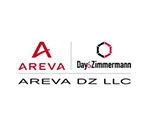History
1900s
1900 - 1909
The company gets its start based on a simple idea: offer efficiency and consulting reports to manufacturers, the result of which would be comprehensive betterment reports that reveal how companies can increase productivity through the application of advanced technology.
1901
The company is founded in Philadelphia when Charles Day, a young engineer, joins in a consulting partnership with Kern Dodge. The firm is called Dodge & Day.
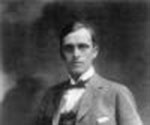
1905
Dodge & Day add an architectural department and enlarge the company's construction workforce. Moving beyond our consultation work, Dodge & Day assume more direct responsibility for construction and modernization projects.
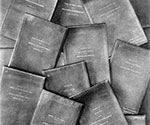
1907
John Zimmermann, a former classmate of Charles Day joins the company, bringing with him significant financial capabilities and business relationships.
1908
During the building of the Gatun Lock system in the Panama Canal, Dodge & Day attract considerable attention in the construction industry when they break the world record for hauling concrete.
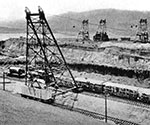
1909
John Zimmermann becomes an important behind-the-scenes influence, creating and maintaining relationships with large banking institutions, and leveraging extensive contacts with public utilities. As a reflection of Zimmermann's growing importance, the company name is changed to Dodge, Day & Zimmermann.
1910s
1910 - 1919
By this time, Dodge, Day & Zimmermann would boast a client list of fifty, including influential and large companies, and a variety of work that spanned the industrial spectrum. The company performed feasibility studies for banks, writing bettermant reports for industry, planning and overseeing plant construction for manufacturing companies, and managing power plants for public utilities.
1911
Kern Dodge withdraws from the partnership and the company is renamed Day & Zimmermann.
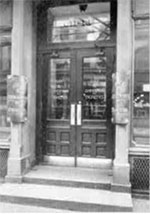
1914
Hershey Chocolate calls on Day & Zimmermann to design the foil wrapping machines for the company's famous Kisses.
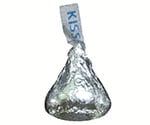
1916
Day & Zimmermann begins construction on the Bensalem Bridge (Philadelphia) just before the U.S. entered World War I. Though work was interrupted by the war, Day & Zimmermann completes the project in 1922.
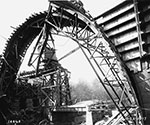
1918
The war effort spurs a huge increase in business, including a contract to design and manage construction of a mammoth Quartermaster Terminal in Philadelphia. Built in six months, it was the largest project undertaken up to that point.
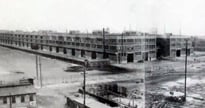
1920s
1920 - 1929
At twenty years old, Day & Zimmermann continued to be run by one of its founders and its chief visionary, and was still staffed by many of its earliest employees. The company had evolved a culture that was close-knit, innovative, and based on Charles Day's standard of "99.9 percent effort" on every job.
1921
In the company's 20th anniversary year it published an impressive financial record of its first two decades in business. In the public utilities field it noted more than $75 million in managed properties, while the engineering reports division had produced industrial reports in 22 states and appraisals in 15 states. Also in the first 20 years, the construction division had designed and managed construction for 40 plants with a total value of $40 million.
1926
One of Day & Zimmermann's largest revenue sources becomes the management of public utilities. In 1926, the company takes over Penn Central Light & Power and the Municipal Services Company — umbrella organizations that link Day & Zimmermann's far-flung energy and rail interests.

1927
John Zimmermann negotiates to ally the company with the giant of Pennsylvania utilities, UGI, the United Gas Improvement Company of Philadelphia. The public service and construction divisions of Day & Zimmermann would become outright divisions of UGI, while the industrial, engineering, investigations and reports divisions retained the Day & Zimmermann name. The move marks the end of John Zimmermann's career at Day & Zimmermann, as he becomes president of UGI and would later be elected its chairman.
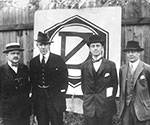
1928
Persistent health problems would prompt Charles Day to step down as president of Day & Zimmermann. He is succeeded by W. Findlay Downs, one of the pioneers at Day & Zimmermann, who would retain his position as president until 1955. One of his first moves is to join with Nicholas Roosevelt to buy back Day & Zimmermann — minus the utility businesses — from UGI. Together they work to return to the company's roots of industrial engineering, analytical reports, and construction.
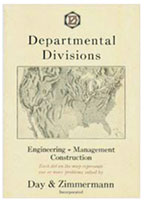
1930s
1930 - 1939
Like most companies, Day & Zimmermann felt the effects of the Depression as engineering and construction work dropped off. The company relied on its consulting expertise, performing evaluations for banks and a variety of industrial clients.
1936
Day & Zimmermann is hired, as part of sweeping public works programs, to build electric transmission lines for a massive project to bring electricity to the United States' rural areas.

1937
Day & Zimmermann is contracted to design a new kind of grocery store. The resulting design for SafeWay is the first completely modern "supermarket" design, one that remained basically unchanged in the decades since.
1938
The company, which had been so involved with the military through World War I, was an early and important contributor to the new war effort, facilitating industry's rapid shift toward defense production.

1940s
1940 - 1949
When war loomed once again, defense contracts began to pour through the economy. Throughout World War II, Day & Zimmermann played an important and direct role, building and managing ammunition plants thorughout the U.S.
1940
What would become the Yoh Company was founded as Duncan Tool Design by a group of partners including Harold Yoh.
1941
Day & Zimmermann helps design and engineer the U.S. Marine Corp Depot of Supplies in Philadelphia.

1943
Day & Zimmermann engineers help design a steel plant in MonClova, Mexico. The project relies exclusively on reclaimed and reconditioned parts from other plants, which were shipped to Mexico and reassembled. The plant later launches the Altos Hornios Steel Corporation.
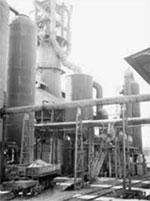
1945
The Cressona Ordnance Plant in Cressona, Pennsylvania was originally built by Day & Zimmermann as an aluminum reclamation facility.

1946
Harold Yoh buys his partners out and changes Duncan Tool Design's name to the H.L. Yoh Company and begins to build a leading technical staffing company.
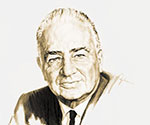
1949
Day & Zimmermann begins to see the effects of globalization as it takes on engineering and consulting projects in India, South Korea and other locations around the globe.
1950s
1950 - 1959
By the 1950's, Day & Zimmermann was operating throughout the United States, Canada, Europe, Asia, and Central and South America, and has grown steadily in reputation and expertise. Day & Zimmermann's wide range of projects included work in engineering, construction, utilities consulting, valuations and appraisals, plant management and military work — an incredibly diverse blend.
1951
Day & Zimmermann is awarded a contract with the army to manage Lone Star Army Ammunition Plant in Texarkana, Texas, a vast complex that sprawls over 16,000 acres with an impressive infrastructure of more than 900 separate buildings, 160 miles of roads and 40 miles of railroad track.

1955
W. Findlay Downs announces his retirement. Downs had run the company for more than twenty years, guiding Day & Zimmermann through the Depression, when the company scaled back drastically, then through the massive World War II buildup. He remains chairman after his retirement.
1956
Day & Zimmermann's expertise is called upon for a comprehensive survey of energy requirements for the Republic of South Vietnam. Following the survey, which took four years to complete, the company submitted recommendations for power generation, regulation and distribution and later provided managerial, financial and technical advisory services to help build the projects.
1957
Corning Glass becomes an important client and relies on Day & Zimmermann to help design Pyrex glass plants.
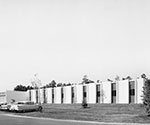
1957
Day & Zimmermann's president Theodore Seelye, is succeeded by Thomas Hopper, head of the company's engineering department.
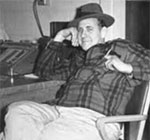
1960s
1960 - 1969
The true seeds of the modern Day & Zimmermann were sewn in the 1960's, when it was bought by the H.L. Yo Company. Day & Zimmermann continued to grow as a broad-based engineering, consulting, and defense company, working on a variety of projects at home and pushing for continued international expansion.
1961
Day & Zimmermann is purchased by the H.L. Yoh Company, a Philadelphia-based technical staffing firm. Like Day & Zimmermann, it relied on the excellence of its engineering services.
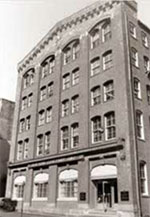
1962
Major engineering projects included a joint venture to build what was at the time the largest electrical substation in the world — the Niagra River Power Project.
1963
During the 1960's, when the U.S. was rapidly developing space exploration, the Yoh Company helped with the crucial program, including design of the Mercury and Gemini capsules.

1964
American Machine and Foundry (AMF) Company selects the Yoh Company, in conjunction with the St. Louis Car Company, to design and build the monorail for the 1964 New York World's Fair.

1965
Hershey dedicates a plant in Oakdale, California. The 400,000 square foot plant embodied the most advanced chocolate-marking techniques and was built with the engineering, design and construction management help of Day & Zimmermann.

1965
President Lyndon Johnson issues a Presidential Citation to the Lone Star Army Ammunition Plant, where Day & Zimmermann is the operating contractor, for its cost- reduction program that saved millions of dollars in its first year of operation.

1967
To build the massive new Korat Air Base in Thailand, Day & Zimmermann enlists thousands of local workers, training them to build a spectrum of facilities, including hospitals, quarters, hangars, and landing strips.
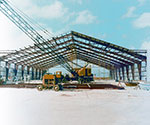
1968
With the escalation of hostilities in Vietnam, the Lone Star plant grew steadily through the mid-1960s. To help the war effort, the Day & Zimmermann-operated plant produced and packed many kinds of ordnance, including bombs, large-caliber ammunition, rocket launchers, and grenades.
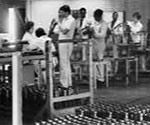
1970s
1970 - 1979
Though the Vietnam War was ending and munitions production operations were curtailed, Day & Zimmermann developed some of the United States' best munitions technology at the time, establishing the first improved Convention Munitions (ICM) load, assemble, and pack process for the U.S. Army. Other growth and acquisition activity had Day & Zimmermann managing federal and commercial facilities, restoring historic buildings, and designing breweries.
1970
Because of its long and successful association with the Lone Star plant, Day & Zimmermann is awarded a contract to manage the Kansas Army Ammunition Plant, which produced 155mm and eight-inch rounds, plus a variety of other ordnance.
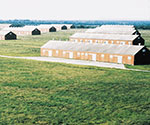
1971
When the Penn Central Transportation Company declares bankruptcy in 1971, Day & Zimmermann is called in to perform a system-wide asset appraisal, which takes several years.

1971
Day & Zimmermann is chosen as the construction manager for Veterans Stadium in Philadelphia, with responsibility for construction coordination and inspection, change order approval, payment certification, and progress reporting.
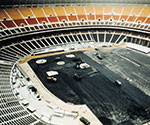
1975
Day & Zimmermann and Yoh Company personnel help with a massive three year modernization program for the U.S. Postal Service. The huge program includes 645 separate modernization projects.
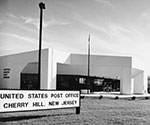
1975
Significant acquisitions during this time included the purchase of Cole-Layer-Trumble Company, taking Day & Zimmermann into the property appraisal business.
1976
Spike Yoh takes over the helm of Day & Zimmermann, focusing on growth through acquisition and diversification.
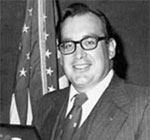
1977
Day & Zimmermann acquires MDC Systems Corporation, a management services company with high-profile projects that addressed health care delivery, construction cost escalation, waste disposal and energy shortages.
1980s
1980 - 1989
As it entered the 1980's Day & Zimmermann was one of the nations twenty-five largest engineering firms, one hundred largest defense contractors, one of the five largest technical service firms, among the foremost sercurity firms in the power industry, one of the largest mass appraisal firms in the world, and one of the largest technical consulting firms in the Philadelphia region.
1980
Day & Zimmermann engineers work on a huge expansion project at San Antonio International Airport that was delivered in 1984 on-time and under budget.
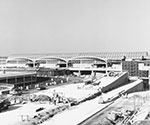
1981
Day & Zimmermann secures a major contract to operate and manage what is at the time the largest ammunition storage depot in the world — Hawthorne Army Depot in Nevada.

1982
SEACOR, purchased by Day & Zimmermann in 1982, was one of the country's premier maritime engineering companies. It worked with the U.S. Navy on engineering programs for a wide range of ships, including aircraft carriers. In 1984, the company wins a contract for loading and off-loading ships around the world.

1987
Protection Technology Inc. evolves out of commercial security contracts being serviced by the Yoh Company and beomces a major security service provider with significant contracts with the Department of Energy.
1987
Life Sciences International is formed to provide engineering, design and validation services for the biotech and pharmaceutical industries.
1989
The acquisition of NPS Energy Services moves Day & Zimmermann into nuclear and fossil power plant maintenance.
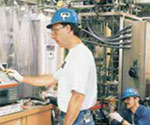
1990s
1990 - 1999
Diversification becomes a hallmark of Day & Zimmermann as the business continues to extend beyond engeineering and munitions work with the power plant maintenance, security and Yoh staffing units growing quickly, partly through acquisition.
1992
The Yoh Company acquires Salem Technical Services almost doubling its number of branch offices and greatly expanding its geographical footprint.
1993
Protection Technology Inc., Day & Zimmerman's security division, wins contracts to provide security at the Los Alamos nuclear laboratory in New Mexico and to provide nationwide security for DuPont.
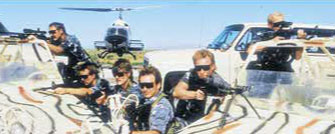
1995
NPS broadens its reach with the acquisition of Pullman Power Products Division of Rust International and in 1995 wins a major maintenance and modification services contract with the Tennessee Valley Authority.
1996
Yoh Company acquires United Technical Associates, a Pennsylvania-area temporary services firm.
1998
Day & Zimmermann receives the prestigious national "Family Business of the Year" honor.

1999
Harold Yoh, III succeeds Spike Yoh as Chairman and CEO.
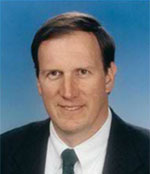
1999
Day & Zimmermann acquires The Mason Company of Lexington, Kentucky — also known as Mason & Hanger - a unique fit given munitions and base operations businesses, as well as engineering and security divisions.
2000s
2000 - 2009
Diversification becomes a hallmark of Day & Zimmermann as the buiness continues to extend beyond engineering and munitions work with the power plant maintenance, security and Yoh staffing units growing quickly, partly through acquisition. Day & Zimmermann focuses on strategic growth by providing dynamic industrial, defense and workforce solutions, while maintaining the company's unique culture and focus on values.
2001
Day & Zimmermann celebrates its one hundred year anniversary.
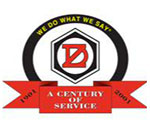
2002
Yoh is awarded a contract to support temporary staffing requirements at NBC.
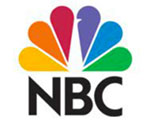
2004
Day & Zimmermann forms a joint venture with Lockheed Martin called DS2 to support the Department of Defense with equipment and facility maintenance services around the globe.

2006
Day & Zimmermann acquires The Atlantic Group, forming one of the largest maintenance and modification firms serving the power industry. The operations are renamed DZ Atlantic.
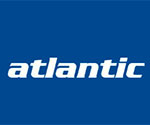
2006
Day & Zimmermann acquires Reliable Security to broaden the geographic reach of its Security Services unit in the New England region.
2007
Day & Zimmermann acquires 100% of American Ordnance, previously a joint venture with General Dynamics. American Ordnance operates both Iowa Army Ammunition Plant and Milan Army Ammunition Plant.
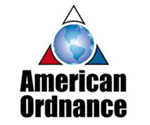
2007
Mason & Hangar celebrates its 180 year anniversary.
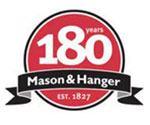
2008
Day & Zimmermann's Power Services unit purchases a fabrication and machining facility in Mississippi to complement existing maintenance and construction operations.
2009
Day & Zimmermann's Power Services unit forms a joint venture with AREVA called AREVA DZ, to provide integrated engineering, construction and maintenance services to the U.S. nuclear power plant fleet.
